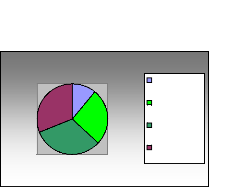2.3.2.3. FIELD OBSERVATION
The completion of this research will need the field work by
which the observation, interviews, image capturing and GIS software will
intervene.
2.4. DATA ANALYSIS AND INTERPRETATION
Once data were obtained from the field, they have been cleaned
and analyzed before to be interpreted. Appropriate methods for analysis depend
on the objectives, the study design, and nature of observations. Regarding to
the nature of data, the research found descriptive statistics in the
analysis.
To analyze the data collected, we used SPSS and Microsoft
office excels to generate figure and graphs and then after, these were
interpreted.
17
CHAPTER THREE: RESEARCH FINDINGS AND
DISCUSSIONS
This chapter focuses on literature review and the analysis of
the data collected and the answered questions stated in chapter one. The
general objective of this study was to analyze the environmental and
socio-economic impacts of forest changes on the local population specifically
Gishwati forest in Rutsiro and Nyabihu districts. This chapter targets the
elements that prove relevant findings relating to the changes of Gishwati
forest and its impacts which take into consideration the sampled respondents of
the present study conducted in the aforementioned areas.
3.1. LITERATURE REVIEW 3.1.1. INTRODUCTION
This has explored the literature related to the study.
Different books, journals, articles and reports were investigated to
conceptualize and explore knowledge gap in the study of environmental and
social economic change.
3.1.2. DEFINITIONS OF KEY WORDS
Environment is a complex of external factors
that act on a system and determine its course and form of existence. An
environment may be thought as a superset, of which the given system is a
subset. An environment may have one or more parameters, physical or
otherwise.
Environmental change is a major problem of
the world. The environment of Gishwati has changed since 1930s. Many
researchers tried to focus on different issues and aspects of environmental
change. The extensive farming systems requiring large land areas have
contributed most to encroachment of agriculture land and forest clearance with
increased degradation of land and destabilization of ecosystems.
Mohsen Ahadnejad (2000) , in Khalid Bin Musa (2008) describes
environmental protection is faced a critical problems due to several factors
such as the increasing population, demolishing natural resources, environmental
pollution, land use planning as well as others. Presently unplanned changes of
land use have become a major problem. Most land use changes occur
18
without a clear and logical planning with any attention to
their environmental impacts. Major flooding, air pollution in large cities as
well as deforestation, urban growth, soil erosion, desertification are all
consequences of a mismanaged planning without considering environmental impacts
of development plans. Desertification is a common consequence of improper land
use change.
Land use the relationship between man and
land is inseparably closed. That means, land has been the source of mans food,
shelter, clothes, etc, that is why, people have been using land in many ways
which is changed according to place and time as well as the social and
economical needs of people, so I think man has to know about the land resources
and land use in order to meet his own needs. The term land use has been
attempted to be defined differently from various perspectives by different
scholars. Land use has been seen as a product of interactions between a society
cultural background, skill and its physical needs in one hand and the natural
potential of land on the other hand (Rarn and Kolarkar 1993, in Khalid Bin Musa
(2008). Land use is also defined as people?s activities on land which are
directly related to land (Clawson and Stewart 1965), (Burley, 1961) in Khalid
Bin Musa (2008).
Land cover +land utilization= land use
The barriers of the development are our population and a
limited land resource. Land use is very important both to the user of the land
parcel as well as to understand the environment around. The land use pattern of
an area changes along with time according to need. The changes are related to
the overall functional demand and physical environmental change. Without
knowing the land use changing pattern, it is impossible to make a future
development plan for an area or a region (Khorram et al. 1991, in Khalid Bin
Musa (2008). For the best use of any parcel of land, it is very essential to
know the potentiality of that land resource and the land use changing trend of
that area. At a more mundane level, interaction occurs between everyday
behavior and future land use patterns: existing land use arrangements in part
determine where people live, where they work, and how and when they travel
there, where they shop, where they play, etc., while such behavior in turn
helps to shape future land use patterns (Rhind and Hudson, 1980, in Khalid Bin
Musa (2008). The major land uses worldwide are shown in the below figure.

19
11
cropland
31
26
32
rangeland and
pasture
forests and
woodlands
others
Source: FAO, 1992
Figure 4. Major land uses in the World
(%).
Land cover refers to the surface cover on the
ground, whether vegetation, urban infrastructure, water, bare soil or other. It
is important to distinguish the difference between land cover and land use and
the information that can be assigned from each.
Land use change
As the earth's population increases and national economies
continue to move away from agriculture based systems, cities will grow and
spread. The urbanization often infringes upon viable agricultural or productive
forest land, neither of which can resist nor deflect the overwhelming momentum
of urbanization.
Forestry forests are valuable resource
providing food, shelter, wildlife habitat, fuel, and daily supplies such as
medicinal ingredients and paper. Forests play an important role balancing the
earth's CO2 supply and exchange, acting as a key link between the atmosphere,
lithosphere and hydrosphere. Tropical rainforest in particular house an immense
diversity of species, more capable of adapting to and therefore surviving,
changing environmental conditions than monoculture forests.
20
| 


